Owning a Jeep means embracing the freedom of the open road, the thrill of off-road adventures, and the indomitable spirit of a vehicle that’s as at home on a rock-strewn trail as it is cruising through the urban jungle. Yet there’s one foe that can take the shine off your ride — quite literally — and that’s the persistent, pesky problem of fog inside your Jeep. Bespectacled Jeepers, quite understandably, loathe it for good reason: fog can impair visibility, lead to poor driving conditions, and in some cases, can create potentially hazardous situations.
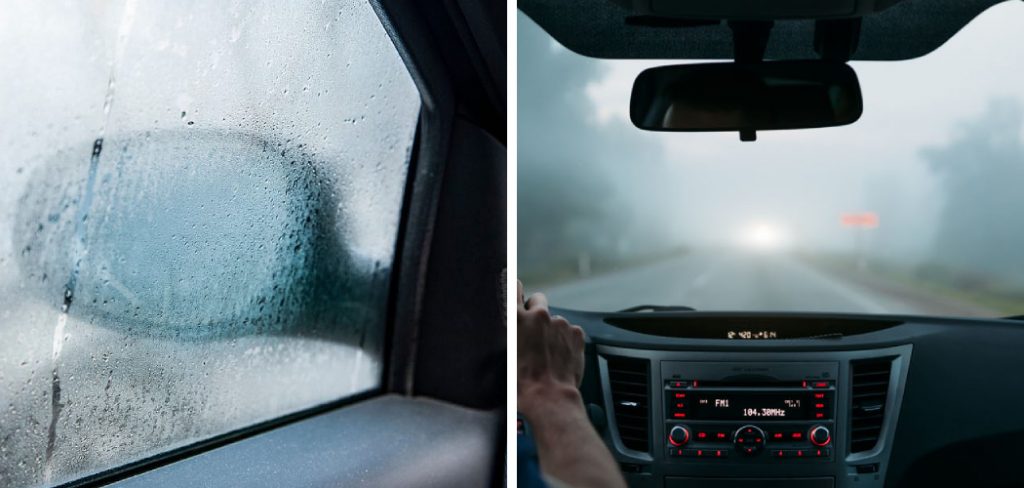
To help you keep your windshields fog-free and clear, we’ll delve deep into how to avoid fog inside jeep, detail preventative measures, and explore quick remedies to see you through any adventure, regardless of the weather or terrain. Buckle up — we’re about to blast through the fog and ensure your next Jeep journey is crystal clear.
Importance of Clear Visibility for Safe Driving
Clear visibility is paramount when it comes to safe driving, especially when navigating the unpredictable terrains that Jeep enthusiasts often explore. Fogged-up windshields obscure hazards, impair depth perception, and can delay reaction times to the unexpected — a potentially dangerous combination for any driver. The ability to see clearly through your Jeep’s windshield is not only a cornerstone of safe driving practices but also a legal requirement in most regions. Ensuring your view is unobstructed allows for better situational awareness and decision-making, which is crucial for both the driver’s and passengers’ safety, as well as for others on the road.
Understanding the Causes of Fog in Your Jeep
Condensation: A Natural Byproduct of Temperature Variation
Condensation occurs when warm, moist air meets a cooler surface. In your Jeep, this can happen when the heated interior air contacts the chilled windshield, creating a film of water droplets that obscures your vision. This often occurs during the transition from a cold exterior to a warmed internal environment — a frequent scenario for any Jeeper.
Moisture from the Elements and Environments
Jeep adventures often take place amidst rain, snow, or even the occasional sea spray. These external elements introduce more moisture into the vehicle. Moreover, climate and weather conditions in your area can lead to consistently high humidity, making it a year-round issue for some Jeepers.

Humidity and Wet Gear
If you or your passengers carry wet gear or are soaked through from your latest trek, the added moisture can contribute to fog. Wet shoes, coats, and clothing, if left unattended, can introduce a surprising amount of humidity to your interior, especially when the sun warms up the Jeep.
10 Methods How to Avoid Fog inside Jeep
1. Use Anti-Fog Treatments:
Apply a commercial anti-fog treatment to the interior surfaces of the windshield and windows. These treatments create a hydrophilic coating that helps prevent condensation from forming on the glass, reducing fog buildup and improving visibility. Follow the instructions provided by the manufacturer for best results. To further enhance the effectiveness of these treatments, make sure to clean the glass surfaces thoroughly before application.
In addition to commercial anti-fog treatments, there are also natural remedies that can help reduce fog on windows and windshields. For example, rubbing a small amount of shaving cream or white vinegar onto the glass surface can create a protective layer that prevents fog from forming. Another option is to mix equal parts of water and rubbing alcohol, then spray the solution onto the glass and wipe it off with a microfiber cloth.
2. Keep the Interior Clean:
Regularly clean the interior surfaces of the Jeep, including the windshield and windows, to remove dust, dirt, and debris that can contribute to fogging. Use a mild detergent or glass cleaner and a microfiber cloth to ensure a streak-free finish. Additionally, vacuum the floor mats and seats to remove any loose dirt or debris. To keep the interior smelling fresh, use a fabric refresher or air freshener specifically designed for vehicles.
It’s also important to regularly clean and maintain the upholstery in your Jeep. This can help prevent staining and prolong the life of your seats. Use a specialized cleaner for different types of upholstery such as leather, cloth, or vinyl. Be sure to follow the instructions carefully and test a small, inconspicuous area first before applying to the entire seat.
3. Use a Dehumidifier:
Install a portable dehumidifier inside the Jeep to reduce excess moisture in the air. Dehumidifiers help maintain optimal humidity levels, preventing condensation and fogging of the windows and windshield. They also help prevent musty odors and mold growth, which can be common in vehicles that are exposed to high levels of moisture.

To install a dehumidifier, first choose the right size for your Jeep. This will depend on the size of your vehicle and how much moisture it typically encounters. A larger dehumidifier may be necessary for larger or more humid vehicles.
4. Regulate Interior Temperature:
Keep the interior temperature of the Jeep at a comfortable level to minimize the risk of condensation. Avoid extreme temperature fluctuations that can cause moisture to accumulate on the glass surfaces, leading to fogging. This can make it difficult to see while driving and can be dangerous. Although it may be tempting to blast the air conditioning on hot days or crank up the heat on cold days, try to maintain a consistent temperature inside your Jeep.
Additionally, regularly check and replace any faulty seals around windows and doors. These can cause drafts and allow outside air to enter, causing temperature fluctuations inside the vehicle. Properly functioning seals also help regulate interior temperatures by keeping out moisture and preventing fogging.
5. Turn on the Defroster:
Use the defroster setting on the Jeep’s HVAC system to direct warm air onto the windshield and windows. This helps evaporate moisture and prevent fog buildup, especially during cold weather or when driving in humid conditions.
To turn on the defroster, look for the HVAC controls which are usually located in the center console area of your Jeep. The exact location may vary slightly depending on the model of your Jeep.
Once you have located the HVAC controls, find the button or dial that is marked as ‘Defrost’ or has a symbol resembling a windshield with arrows pointing up. This is the defroster setting.
6. Maintain Proper Ventilation:
Ensure adequate ventilation inside the Jeep by keeping the windows slightly cracked or using the fresh air intake feature on the HVAC system. Proper ventilation helps circulate air and expel moisture, reducing the likelihood of fogging. It also helps maintain a comfortable temperature inside the Jeep.
Ventilation is an important aspect to consider when it comes to maintaining your Jeep. Proper ventilation not only keeps the air inside fresh and breathable, but it also plays a crucial role in preventing fogging on the windows. In addition, good ventilation ensures that the interior of your Jeep stays at a comfortable temperature, making your driving experience much more enjoyable.
7. Check and Seal Leaks:
Inspect the Jeep for any signs of leaks or water ingress, especially around the doors, windows, and sunroof. Seal any gaps or cracks using weatherstripping or silicone sealant to prevent moisture from entering the interior and causing fogging. Additionally, check the condition of all rubber seals and replace any that are worn or damaged. However, checking for leaks is not just limited to the exterior. It is also important to inspect the interior of the Jeep for any signs of water damage or mold growth.
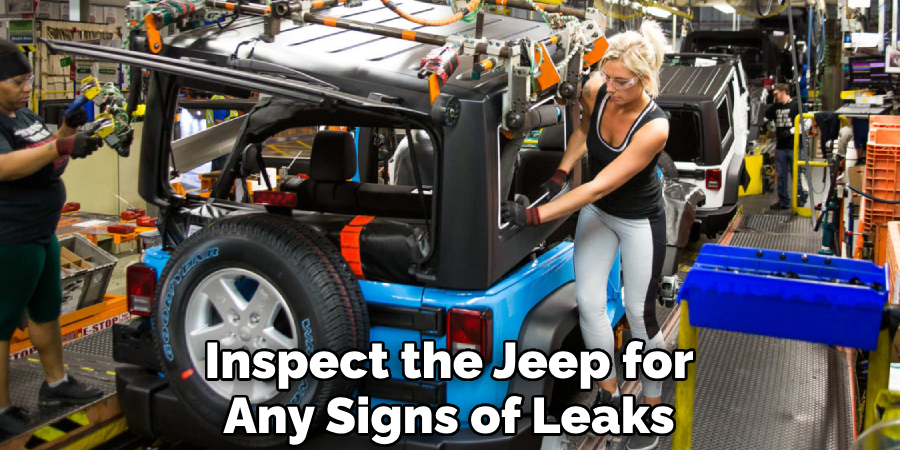
Leaks can occur in a variety of areas inside the Jeep, such as around door seals, through damaged weatherstripping on windows, or even from clogged sunroof drains. These leaks can lead to costly repairs and potentially compromise the structural integrity of the vehicle. To prevent this, regularly check for any signs of water damage or mold growth on the seats, carpets, and floor mats.
8. Use Desiccants or Silica Gel Packs:
Place desiccant bags or silica gel packs inside the Jeep to absorb excess moisture from the air. These moisture-absorbing materials help maintain dry conditions inside the vehicle and prevent fog buildup on the windows and windshield. They are also useful for preventing rust and corrosion on metal surfaces. Place the desiccant bags or silica gel packs in areas where moisture is most likely to accumulate, such as the glove compartment, under seats, and inside storage compartments.
Silica gel packs can also be used to dry out wet items such as clothing or shoes. Simply place the wet items in a plastic bag with several silica gel packs and seal the bag for a few hours. The silica gel will absorb the moisture, leaving your items dry and ready to use.
9. Avoid Wet Gear and Clothing:
Avoid bringing wet gear or clothing into the Jeep, as moisture from these items can contribute to fogging. Store wet items in waterproof containers or compartments to prevent moisture from spreading and causing condensation. Additionally, avoid overloading your Jeep with gear and luggage. Overpacking can restrict airflow and lead to more fogging.
Condensation is a common problem that many Jeep owners face, especially during colder months or in areas with high humidity. It occurs when warm air inside the vehicle comes into contact with cold surfaces, such as windows or mirrors, causing moisture to form droplets and fog up the glass. This can not only be annoying but also dangerous as it obstructs your view while driving.
10. Address HVAC System Issues:
Regularly inspect and maintain the Jeep’s HVAC system to ensure proper functionality. Replace worn-out cabin air filters, clean evaporator coils, and check for any malfunctions that may contribute to excessive moisture buildup and fogging. Some of the common issues with HVAC systems include refrigerant leaks, dirty condenser coils, and faulty blower motors.
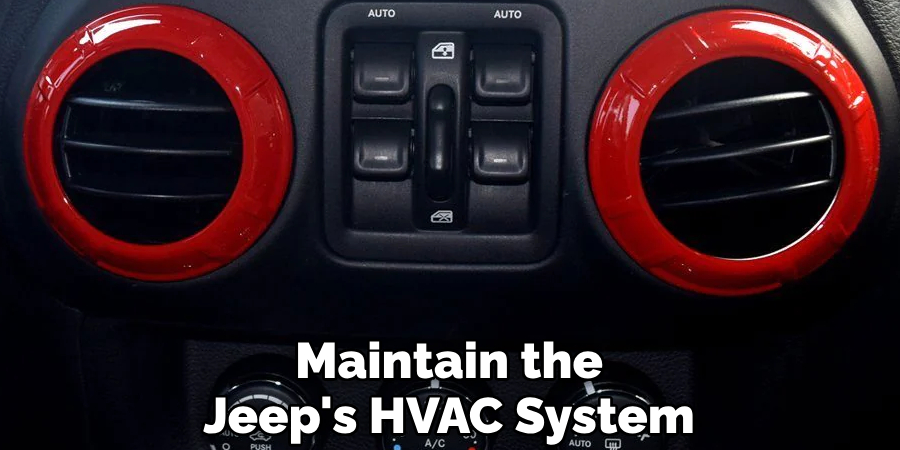
In addition to regular maintenance, it is also vital to address these issues promptly to prevent further damage and costly repairs. However, before attempting to fix any HVAC issues, it is advisable to consult a professional mechanic or refer to the Jeep’s owner manual for proper troubleshooting steps.
Tips for Clearing Fog Quickly
Quick Defrosting Methods
For severe fogging, using the Jeep’s defroster and heater on high will clear the windshield fastest. Turning on the AC, even in winter, will help to remove moisture from the air, aiding the defrosting process.
Utilizing Windshield Wipers and Demisters
Using your wipers to physically clear the windshield alongside the defroster and rear-window demister systems can clear fog, albeit a temporary fix. Invest in quality wiper blades for optimal performance.

Open Windows and Sunroofs
In some cases, the best way to clear fog is good old-fashioned airflow. Opening your windows and sunroof can drastically improve circulation and clear the moisture from your windshield. This should be done judiciously, especially in inclement weather.
Checking and Maintaining HVAC Systems
Regular maintenance of the HVAC (Heating, Ventilation, and Air Conditioning) system in your Jeep is crucial for its effective operation. Aim to replace the cabin air filter every 15,000 to 25,000 miles or as indicated in your Jeep’s owner’s manual to ensure clean air circulation and avoid pollen, dust, and other particulates from clogging the system. A clogged filter can restrict airflow and exacerbate windshield fogging.
It’s equally important to have the HVAC system inspected by a professional regularly. This includes checking for refrigerant levels, ensuring there are no leaks, and verifying the proper operation of the compressor and blower motor. If you notice a decrease in heating or cooling efficiency or hear odd noises during operation, these may be signs that your HVAC system requires attention.
Furthermore, during winter, consider running the A/C periodically, even if it’s cold outside, as it helps dry out the air within the vehicle and keeps the system lubricated. Properly maintaining your Jeep’s HVAC system will not only help with windshield defogging but also provide a comfortable and healthy environment inside your vehicle throughout the year.
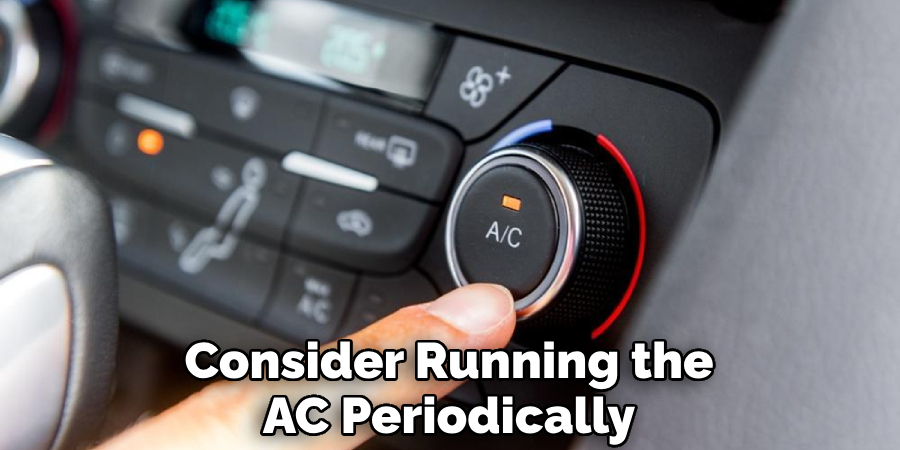
Utilizing Anti-Fog Solutions and Products
Anti-fog solutions and products can be a game-changer in maintaining clear visibility in your Jeep. Apply anti-fog sprays or wipes to the interior of the windshield and windows to create a protective barrier that prevents moisture from gathering. These formulations typically work by minimizing surface tension, allowing water molecules to spread evenly into a thin, invisible layer rather than forming droplets.
When selecting an anti-fog product, choose one that is long-lasting and designed specifically for automotive use to ensure it won’t damage interior surfaces or leave a residue that can impair visibility. Always follow the application instructions carefully for the best results. Regular application of these solutions can significantly reduce the frequency of fogging under various conditions.
Maintenance and Care to Keep Fog at Bay
Check and Replace Your Cabin Air Filters Regularly
A clogged or dirty air filter can hinder proper ventilation, leading to fog issues. Regularly inspect and replace cabin air filters following the manufacturer’s recommended maintenance schedule.
Keep the Interior Clean and Dry
Dirt and grime can exacerbate fogging, providing a surface for condensation to easily form. Regularly clean the interior surfaces, especially glass areas, and make sure to dry the vehicle’s interior thoroughly after any excursions in wet conditions.
Check for Leaks and Address Water Intrusion
An unnoticed water leak can lead to constant moisture problems, despite your best efforts. Carefully inspect your Jeep for any points of entry and address them promptly to keep your interior environment dry.
Jeepers, your adventure doesn’t stop with the elements, nor does it end with a foggy windshield. By understanding what causes fog and implementing preventative measures, you can ensure that the view from your Jeep remains unobstructed. With regular maintenance, quick-fix defogging tricks, and a commitment to keeping the inside of your Jeep as you do the outside — clean and ready for the next escapade — you’re well-equipped to tackle any travel conditions.
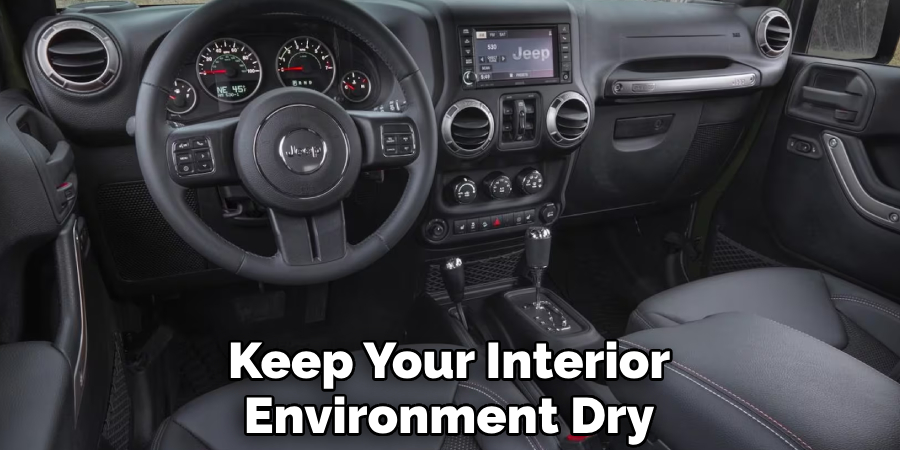
The best adventures are the ones where the horizon stretches out before you, clear and inviting. Take the wheel with confidence, knowing that your Jeep’s interior will be as reliable as its legendary four-wheel-drive system. Stay safe, stay clear, and keep on Jeepin’.
Conclusion
In conclusion, preventing fog buildup inside a Jeep is essential for ensuring clear visibility and a comfortable driving experience, especially in adverse weather conditions. By implementing the strategies outlined in this article, Jeep owners can effectively mitigate fogging and maintain a clear windshield and windows. From using anti-fog treatments and defogging solutions to regulating interior humidity levels and maintaining proper ventilation, there are various proactive measures available.
Additionally, addressing underlying issues such as faulty seals, leaks, or HVAC system malfunctions can help prevent moisture buildup and reduce the likelihood of fog formation. By prioritizing regular maintenance, monitoring interior conditions, and adopting preventative measures, Jeep owners can enjoy improved visibility, enhanced safety, and greater driving comfort. Ultimately, understanding how to avoid fog inside jeep contributes to a safer and more enjoyable driving experience for all occupants.

About
JeepFixes Team is a skilled author for Jeep Fixes, bringing 6 years of expertise in crafting a wide range of jeep fixes. With a strong background in jeep fixes work, JeepFixes Team’s knowledge spans various types of fixtures, from decorative pieces to functional hardware, blending precision with creativity. His passion for jeep fixes and design has made him a trusted resource in the industry.
Professional Focus:
Expert in Jeep Fixes : JeepFixes Team aesthetic specializes in creating durable and innovative jeep fixes, offering both appeal and functionality. His work reflects a deep understanding of jeep fixes techniques and materials.
Sustainability Advocate : He is dedicated to using sustainable practices, ensuring that every fixture is crafted with eco-friendly methods while maintaining high-quality standards.
In his writing for jeep fixes, JeepFixes Team provides valuable insights into the latest trends, techniques, and practical advice for those passionate about jeep fixes, whether they are professionals or DIY enthusiasts. His focus on combining artistry with engineering helps others discover the true potential of jeep in design.
